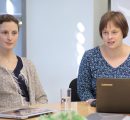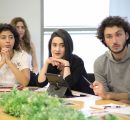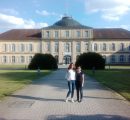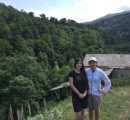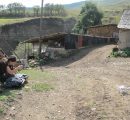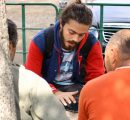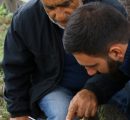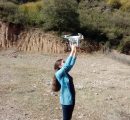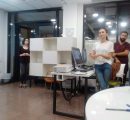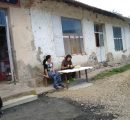
AUA Acopian Center and Hohenheim University Off to a Strong Start on Their GAtES Project
3 min readIn its inception year, 2018, the four-year GAtES project is off to a strong start, making progress in strengthening the AUA Acopian Center for the Environment’s capacity in assessing ecosystem services, particularly by use of Public Participation GIS (PPGIS) tools. The project also enabled exchange of two students and four staff and faculty members between the AUA Acopian Center for the Environment and the University of Hohenheim.
On May 11, 2018, the program held its first event at AUA, a public lecture by Professor Claudia Bieling from the University of Hohenheim, who talked about how PPGIS can be used to map ecosystem services and maintain biological diversity, as well as ensure sustainable development. Over 25 people attended the event.
In June 2018, two staff members of the AUA Acopian Center for the Environment, Litta Muradyan, Environmental Education and Outreach Coordinator, and Aghavni Harutyunyan, GIS specialist, visited the University of Hohenheim. During their visit, which lasted from June 4 to 28, Muradyan and Harutyunyan participated in a graduate-level course titled Landscape Change, Resilience, and Ecosystem Services. Additionally, they attended several research colloquia, team meetings, and other events of the University’s Department of Social Transition and Agriculture.
In summer, the AUA Acopian Center for the Environment hosted two Landscape Ecology MSc Students from the University of Hohenheim, Thi Ngoc Han Nguyen, from July 27 to September 29, and Pauline Pfeiffer, from July 27 to August 18. While at the AUA Acopian Center for the Environment, Nguyen assisted with developing a land use/land cover map for the Getik Valley and Pfeiffer developed a questionnaire to interview local residents on the benefits they gain from the Valley’s ecosystem. Working with these students on the project, were AUA Lecturer Sean Reynolds, Harutyunyan, and Professor at Yerevan State University (YSU) Artak Piloyan. The researchers used a combination of drones, computer imaging, and car travel to develop the map.
On September 24-28, 2018, Professor Claudia Bieling and Dr. Maria Garcia-Martin held an in-depth training at AUA about ecosystem services and PPGIS. Seventeen participants, including AUA faculty and staff, researchers from the National Academy of Sciences, and Agribusiness Teaching Center faculty, took part in the training. Participants worked on creating PPGIS surveys, spatial analysis, and studied how to best interpret results.
The AUA Acopian Center for the Environment conducted further field research in the Getik Valley, September 15 through October 7, to identify and map ecosystem services. Three AUA and YSU work-study students conducted 119 interviews about ecosystem services and land use patterns during four field visits to 13 communities. They used public participation mapping tools, such as Maptionnaire and ArcGIS, to map the services. Their research will conclude with a report, which will contain recommendations on how to best use the Valley’s natural resources. The research findings and recommendations can also be used for environmental policymaking on the local and national levels.
GAtES (or the German-Armenian Network on the Advancement of Public Participation GIS for Ecosystem Services as a Means for Biodiversity Conservation and Sustainable Development) is a joint project of the AUA Acopian Center for the Environment and the University of Hohenheim. It is financed through DAAD, the German Academic Exchange Service, with funds from the German Federal Ministry of Economic Cooperation and Development (BMZ). For more information on the project visit: http://ace.aua.am/gates/
The AUA Acopian Center for the Environment, a research center of the American University of Armenia, promotes the protection and restoration of the natural environment through research, education, and community outreach. AUA Acopian Center’s focus areas include sustainable natural resource management, biodiversity and conservation, greening the built environment, clean energy, and energy efficiency, as well as information technology and the environment.

